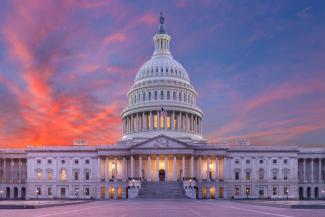
SECURE Act 2.0 has important implications for retirement
In 2022, Congress passed the SECURE Act 2.0 (SA-2) which was a follow on to the original SECURE Act passed in 2019. SA-2 presents a number of important changes that we believe should have important and positive implications for retirement savings.
First is raising of the age for RMDs. Owners of traditional IRAs were originally required to start withdrawing funds from these accounts at age 70-1/2; but under SA-2 the age to begin RMDs is now 73 (it will increase again in 2033 to age 75). This is an important provision because people are living longer and this should give individuals an additional few years to allow their retirement savings to grow tax deferred. Along with this new provision, the penalty for failing to take the RMD on a timely basis is cut in half from 50% to 25% of the RMD for a given year. This is also a positive because it should preserve, on margin, some additional retirement capital. While pushing out RMDs would increase tax liabilities later on, people could mitigate this by taking quantified withdrawals prior to beginning RMDs and roll those into a Roth IRA in which they would continue to grow tax free.
Second is catch-up contributions for workplace retirement plans. Catch-up contributions allow people over 50 to contribute additional funds to both IRAs and 401Ks above the statutory limits. SA-2 raises the catch-up contribution amounts for workplace retirement plans (401Ks, 403Bs) from $7,500 to $10,000 for employees over age 60.
One new twist about catch-up contributions is that they have to be made on an after-tax basis (a Roth account) unless the individual earns $145,000 or less.
We believe the new rules around catch-up contributions have positive implications because they should allow workers to save more for retirement in their later working years when they are most likely to have greater disposable income.
Third is auto enrollment in 401Ks This provision has very significant implications in our view because SA-2 will now require most major employers to automatically enroll all employees in a 401K. Employees will have the option to opt out but we think the “required” aspect of this provision should help, on the margin, to encourage greater retirement savings at the workplace. Also, beginning in 2025, SA-2 will allow part-time workers to qualify for a workplace plan if they have worked at least 500 hours for two consecutive years as opposed to three consecutive years under prior rules.
One new feature of SA-2 that we believe will have important implications for financial planning is beginning in 2023, people will have a one-time opportunity to use a qualified charitable distribution (QCD) to fund a charitable remainder unit trust (CRUT) of up to $50,000. We believe this may be beneficial as an estate planning tool for people who have charitable inclinations and would like either more flexibility in their estate planning and/or still need or desire the income generated by the money contributed to the CRUT.
Robert Toomey, CFA/CFP, is Vice President of Research for S. R. Schill & Associates on Mercer Island.

